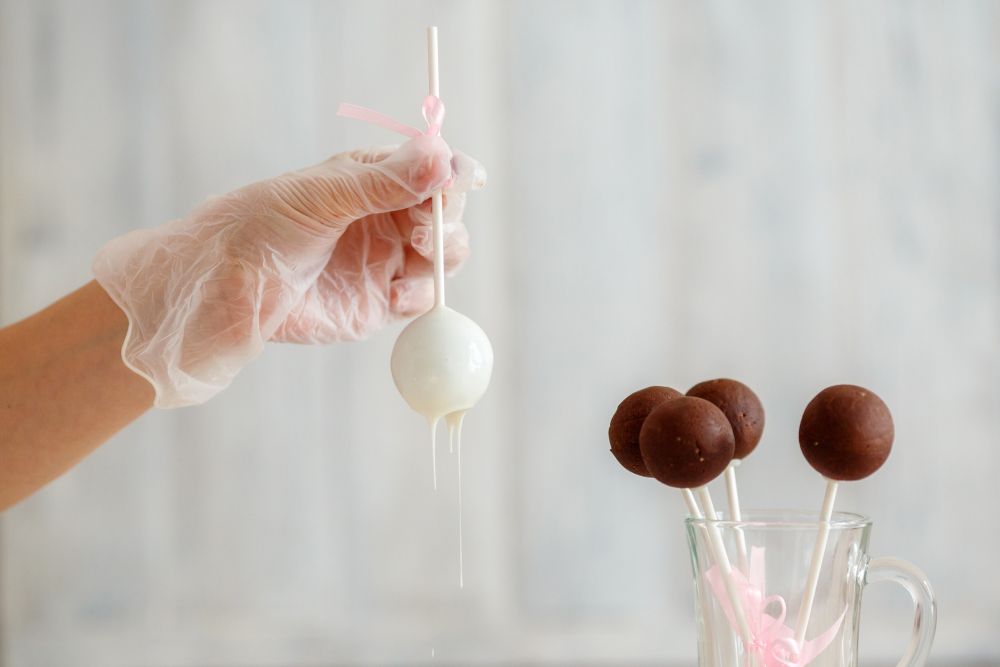Can You Freeze Cake Pops? Here’s How to Do This Right
Cake pops are absolutely delicious, but they take a long time to make; or, at the very least, a lot longer than you may be willing to put in on short notice. When you’re planning ahead for a party, you may also not want to have to do everything the day before, since you may not have the time for everything. In these cases, freezing the cake pops can be a time saver!
Whether that is even possible, however, is a different discussion entirely. As you know, not everything you cook can be put in the freezer and keep its flavors. With cake pops it seems that it will all work out.
Can You Freeze Cake Pops?
We all crave cake pops ever so often, but the fact that it can take anywhere between one and three hours to make keeps us from making them more often. One of our readers sent us a message about a situation they are in, asking for our input. Here’s the message they sent:
I’m doing some baking for a huge party I’ll be throwing in a few weeks, and I’m planning on freezing most of what I bake and then thawing it for the party. This is the first time I plan to try making cake pops too, and I’m not sure if I should make them in advance or wait. Can you freeze cake pops?
Don’t bother waiting, you can definitely freeze cake pops. There are a few ways you can freeze them, so you can decide which method is best for you.
How to Freeze Cake Pops?
Freezing plain cake pops before they’re fully assembled and frosted is the simplest way to freeze them:
- Bake cake pops according to the recipe, and let cool completely.
- Remove the cake pop balls from their molds.
- In order to avoid freezer burn or the cake balls sticking to each other during freezing, wrap each ball individually in plastic wrap.
- Then, place the cake balls in a single layer inside a freezer bag, remove the air, and seal.
To freeze prepared cake pops, a slightly different method is required:
- Prepare cake pops according to the recipe, and then decorate with frosting, chocolate, or candy coating.
- Allow cake pops to dry completely before trying to freeze them.
- Wrap each individual cake pop in wax paper rather than plastic wrap, to avoid any of the coating sticking upon thawing.
- Twist the bottom of the paper around the stick to prevent much air from getting in, but they don’t have to be wrapped tightly.
- Once your cake pops have the plastic wrapped around the stick, wrap wax paper around groups of 5 or 10 cake pops.
- Place them in a freezer-safe container to avoid them being crushed by other objects in the freezer.
How to Keep Cake Pops Fresh for Longer?
If you want to make sure that the cake pops are in perfect shape and have the right flavor when you’re ready to eat them, then perhaps getting a food saver may be a good idea. Food savers can help you save money and time by perfectly preserving the food you want to put in the freezer. They do this by taking out all the air in the container or bag and perfectly sealing them.
Our favorite is the FoodSaver V4840 2-in-1 Vacuum Sealer Machine as it works with bags and various other containers, allowing us to keep our food fresh and safe in the freezer.
How to Thaw Cake Pops?
Thawing cake pops takes a different approach, depending on whether they’re fully assembled or not.
Thawing plain cake pops:
- To use, thaw cake balls completely in the fridge before decorating and then place them on the counter to bring to room temperature.
- It is very important to thaw the cake balls completely before inserting the sticks and dipping in chocolate or candy coating.
- If the cake balls are not completely thawed, the coating will crack as the cake pops change shape while thawing.
Thawing prepared cake pops:
- When ready to use, remove the container from the freezer and place either in the refrigerator or on the counter and allow cake pops to thaw for a few hours before unwrapping them.
- Allowing them to thaw in this manner will help avoid condensation from forming on the pops or having the pops crack.
- To ensure they thaw completely before serving, it’s best to remove them from the freezer the night before you plan to serve them.


